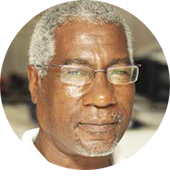
If the US ever wanted to poke China in both eyes, House Speaker Nancy Pelosi was always the best candidate, having a long and established record of breaking diplomatic protocol to embarrass Beijing.
As reported by the BBC’s Melissa Zhu on August 2 in an article entitled Nancy Pelosi’s Long History of Opposing Beijing: “Two years after protestors were crushed by Communist Party forces in Beijing’s Tiananmen Square, the then-California representative visited the capital city” and “Slipping away from her official escorts along with two other members of Congress, she went to the city square without the permission of her Chinese hosts” and “There, they unfurled a small, hand-painted banner which read: To those who died for democracy in China…”
But there was more to follow.
The BBC report continued: “At a meeting with then-Chinese Vice-President Hu Jintao in 2002, Ms Pelosi tried to pass him four letters expressing concern over the detention and imprisonment of activists in China and Tibet, and calling for their release, which he refused to accept…”
In addition, “Ms Pelosi opposed China’s bids to host the Olympic Games as far back as 1993 on the basis of its alleged human rights abuses.”
And further, “She was one of the lawmakers that unsuccessfully urged then-US President George W Bush to boycott China’s Summer Olympics opening ceremony in 2008.”
And now: “This year, the Speaker of the House again led calls for a ‘diplomatic boycott’ of Beijing’s 2022 Winter Olympics over the treatment of Uyghur Muslims in China…”
Thirty years later, Speaker Pelosi has done it again, this time defying political logic and flying to Taiwan despite China’s warnings it would respond seriously.
As a result of her visit, the crisis around Taiwan has entered near-unstoppable and irreversible phases: US deploying an aircraft carrier and warships to the same Taiwan waters where China had been exercising live military drills and Taiwan also launched its own live drills — clear indications that rather than better, thing can only get worse.
The rest of the world looks-on nervously as two of the world’s strongest nuclear-armed military powers trade warnings and threats over provocations and the US loudly encourages Taiwan to defy China — and expect its backing.
Those unaware of the history of the relationship between China and Taiwan would easily be confused into thinking the island is being taken advantage of by its giant neighbor without reason, or just because China wants to show its military might.
But since 1949, China has been saying it will intervene militarily anytime breakaway Taiwan Province’s political leaders try to unilaterally declare independence from the mainland.
The Pelosi visit was obviously one act from a playbook of provocations with political and military elements, including: the hasty US-led military buildup, making China’s response look like “a trial run for an invasion” and hopefully creating justification for the US to eventually lead an international military response in the name of “defending Taiwan”.
China’s long-promised response was undoubtedly provoked by Pelosi’s defiance of its repeated warnings that her visit would have been crossing a red line.
Now, China has issued a third ‘White Paper on Taiwan’ that’s fundamentally altered its stance on the future following any political reunification of the island and the mainland.
Now too, just like Ukraine, the bombs are flying and dropping around Taiwan and the US has mounted a military show of strength in the South and East China Seas but has left Taiwan to face the music on its own.
The US, European Union (EU) and NATO encouraged Ukraine to play hardball with Russia back in February but have also left Kyiv to fight its own battles while offering weapons support from a distance – and now it’s Taiwan’s turn.
Washington on Tuesday announced a new US $1 billion weapons support programme for Ukraine – its 18th so far — just as a CBC report indicated an investigation had found only 30% of the nearly US $100 Billion worth of NATO weapons delivered to date has reached Ukrainian soldiers on its frontline, the remaining 70% “gone with the wind…”
Indeed, US military support to Ukraine has been deliberately limited to less-effective weapons compared to what Kyiv says it needs, as Washington is being calculatedly careful not to provide weapons that would reach Russia – and open the way for Moscow to also directly target America in retaliation for backing a proxy war in Ukraine.
Interestingly, preceding the Pelosi visit, despite the presence of US troops already there, Taiwan has also long been awaiting delivery of promised and purchased US military hardware.
The situation today is such that Chinese on both sides of the dividing strait have had to adjust, almost overnight, to the new reality of a catastrophic clash between nuclear-armed powers resulting in endless death and destruction across the region.
Citizens of Japan, South Korea, Malaysia, Singapore and other neighboring Asian nations are also exposed to that danger and understandably-worried about possibly suffering irreparable and long-term collateral damage – and mush worse than after the US dropped atomic bombs on the Japanese islands of Nagasaki and Hiroshima in 1945.
The uncertainty across Asia is underlined by the fact that never mind China having announced an end to its week-long drills around and above Taiwan, any error or miscalculation could ignite the feared spark.
Thanks to the Pelosi visit, Taiwan and the rest of the world are today less-than-a-step-closer to another unnecessary and costly war, each side expected to be supported by their allies everywhere, including the Caribbean, which has already started yet another externally influenced foreign policy split in a region still struggling to find ways of preserving its independence on such global issues that don’t directly involve the Caribbean.
So, the big question is whether the Pelosi visit was worth what it’s brought to Taiwan, Asia and the world.
In other words: Was the squeeze really worth the juice?





